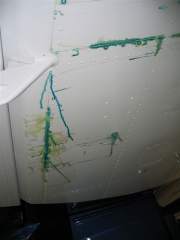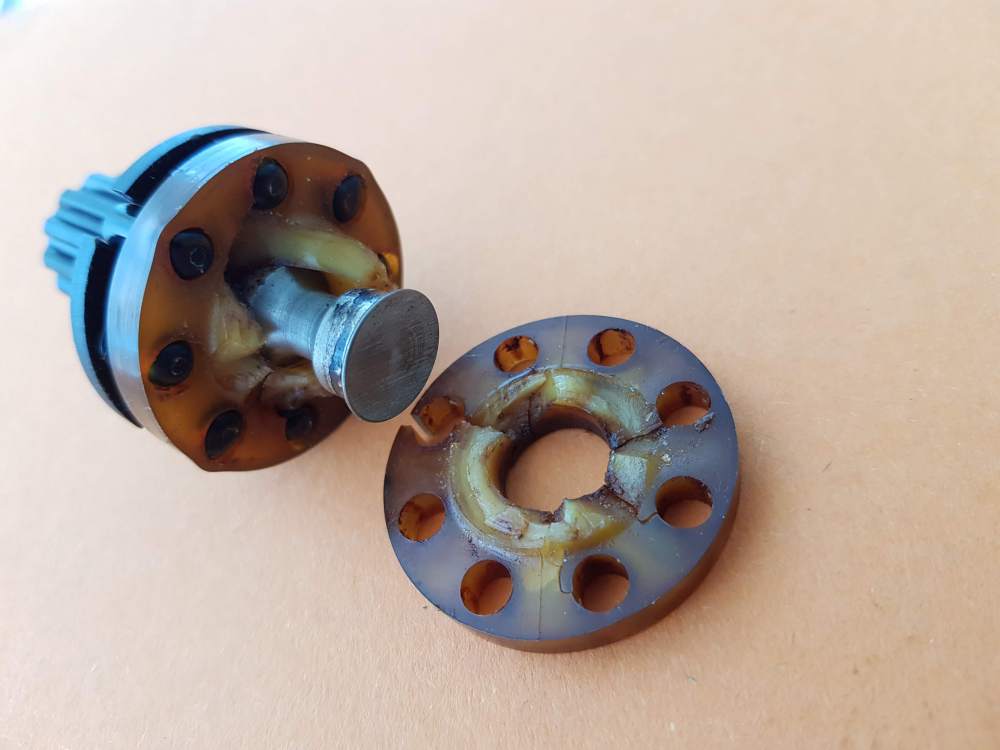-
Posts
135 -
Joined
-
Last visited
-
Days Won
1
29-0363 last won the day on July 8 2015
29-0363 had the most liked content!
Recent Profile Visitors
The recent visitors block is disabled and is not being shown to other users.
29-0363's Achievements
-

Mooney Porsche PFM Parts/Engine
29-0363 replied to drstephensugiono's topic in Modern Mooney Discussion
There's an PFM owner in Melbourne Australia that had a spare airframe and was parting it out. -
I've not shared this before, but I'll add my experience from 2006 in my M20R. Maybe at the time I was over confident, a little tired after 3:30 airborne, a little apprehensive landing at dusk on a short runway with a 15kt crosswind, (tall dense trees on the upwind side), but the holes in the cheese lined up perfectly, and I managed to totally embarrass myself. At about 60' off the deck I was supremely confident I'd nailed it - speed OK, profile OK, crabbing a little because of the crosswind anticipating it would reduce at or below the tree line. I was expecting an absolute greaser. Then it all went pear shaped about 15-20' off the deck. The stall warning went off and a half second later an almighty crunching sound, and I was suddenly just a passenger in a wounded bird making sparks sliding along the runway. What did I do wrong? How could such a normal approach go so wrong? I agonised for days trying to figure out where I'd screwed up. To this day the only explanation I could come up with, is the crosswind over the trees created a rotor, and I flew through its downdraft at exactly the wrong time.
-
I spoke with someone at the factory way back around 2000, explaining my spinner was about 3/8" lower than the cowl (on the ground). It was explained to me the engine naturally sagged on the mounts when stopped on the ground, but when airborne under power the engine rises and aligns the spinner and cowl.
-
My backup key system was a spare ignition key hidden in the cabin, a spare door key in my wallet, and a second door key zip tied in the main wheel bay.
-
In Australia to use the propeller knowing it was somebody else's property would be dishonest dealing or misappropriation. Banks have sent people to jail (gaol) for using funds from ATM's that were paid out in error.
-
I've sold my E model (2000) and 2 Ovations (2008, 2018) privately, and reckon you should always set the price with a little room to move. Some buyers instinctively want to negotiate, while others will see the true value is there and pay full price. Always keep in mind, you can lower the asking price, but you can never increase it.
-
Since 2000 I've owned 2 Ovations and previously a M20E, and I always understood the (L) tyre (tire) would wear both more and unevenly because of the torque loading during takeoff. They were always rotated during the annual inspection and seemed to last forever. I never quite understood just how much torque was involved untill I aborted a takeoff at 50 kts, and the immediate effect of the torque removal while the rudder trim was set hard right caught me off guard and was really scary.
-

Switch Tanks, Switch Tanks, Switch Tanks!
29-0363 replied to donkaye's topic in Miscellaneous Aviation Talk
A very sobering story to remind pilots that the fuel you pumped in the day before might not be there next morning. The pilot of the Lancair had built the aircraft as an owner-builder. He and his passenger had intended to fly from Perth, Western Australia to an airshow at Mangalore, Victoria. On the day prior to the accident, the aircraft arrived early in the afternoon at Aldinga, South Australia, where it was refuelled in preparation for the next leg of the flight. The pilot and passenger then stayed overnight with a friend. The following morning, the aircraft departed for Murray Bridge, South Australia in order to meet up with another aircraft for the remaining flight to Mangalore. When the aircraft was 3 km to the north-east of Aldinga aerodrome, witnesses heard the engine surge and lose power. The aircraft was then seen to enter a spin and crash into a dry creek bed. Both occupants were fatally injured. The accident was not considered to be survivable. Traces of aviation fuel were found on the ground at the accident site under the wing fuel tanks. There was no evidence that a significant quantity of fuel had been released during the impact. There had been no post-impact fire. The investigation established that the aircraft had been refuelled the previous day at Aldinga to a capacity of approximately 80L. It was operating within weight and balance limitations, close to its maximum weight, and close to the aft limit of its centre of gravity. There was no evidence to suggest that the aircraft was not airworthy prior to the accident, nor was there any indication that either the pilot or the passenger had been incapacitated immediately before the accident. The aircraft utilised three fuel tanks: one was located in each wing below the level of the engine, while the third fuel tank was located in the fuselage, above the level of the engine. The engine could be fed with fuel directly from any one of these. It was the pilot's normal policy to use fuel from the fuselage tank when priming the carburettor prior to starting the engine, and then to select a wing fuel tank once the engine had been started. During the flight from Western Australia, only the wing fuel tanks had been filled at all refuelling ports except for Ceduna, where it was not possible to ascertain how the aircraft had been refuelled. Investigation revealed that at the time of the accident, the low-fuel warning light for the fuselage tank was illuminated, indicating that only a small quantity of fuel remained in that tank. The investigation found that aviation fuel had been spilled on the ground, chemically burning the grass, at the aircraft's overnight parking location at Aldinga aerodrome. The shape of the burnt grass area was consistent with fuel having been spilled over the sides of a 20 L fuel drum. Police reported that fuel had been stolen on other occasions from aircraft at Aldinga aerodrome. A road near the aerodrome was regularly used for car racing, and it is possible that fuel was siphoned overnight from the aircraft's fuel tanks. -
EarthboundMisfit started following 29-0363
-
Let me relate my experience with owners remorse - in 2006 I placed 50K in escrow on a 2005 Ovation GX2 located in Kenosha with 46 hrs TTIS. Mark Woods (now with Delta) was selling it on behalf of the owner, with a contract subject only to satisfactory pre-purchase inspection. I then flew to the USA from Australia to inspect the aircraft and be present for the PPI. All went OK except for very obvious wet wing leaks (29-0363 images folder) for which it was agreed the aircraft would be returned to Kerville for repair. It was then arranged for my to fly to Kerville with a Mooney factory pilot, and I was to join the flight in Chicago early on a Monday. I then got a call from the owner about a half hour before leaving to join the flight, saying he'd changed his mind about selling and offered to pay my costs. Now having stumped up the deposit, arranged for the balance to be ready to transfer AND flown from Australia to the USA AND paid for the PPI, I had a limited choices. Demand the Seller complete the deal and if he refused, take legal action? Or walk away? If I was a USA resident I might have insisted, but there's a lot more to life than looking backwards, so I walked. The Seller despite his promise to pay for my PPI inspection and other costs, never did despite numerous reminders, and Mark Woods was unhelpful. Luckily I had a Plan B in place, more for a failed PPI than Buyers Remorse. Richard Simile from Premier had N475SP, an Ovation GX2 with 83 hrs TTIS for sale and within 2 hrs I was on a flight to Atlanta and a bus to Auburn AL. The deal went through without a problem, the PPI came up perfect, and within 4 or 5 days N475SP became VH-OVH on the Australian Register. Richard was extremely helpful and made the deal go through without a hitch. FOOTNOTE: After 12 years and 910 TTIS, 29-0363 has just gone to a new home. I made a personal comitment many years ago to cease private flying the minute I thought me skills had peaked and while my Class 2 medical doesn't expire until Feb 2020 (airplanes are much harder to sell if you don't have one). My decision was also reinforced by a couple of Angelflight crashes where the pilots were older (like myself) and should possibly have known better.
-
-

Shear Coupling Failure - Ovation 2 Standby Alternator
29-0363 replied to 29-0363's topic in Modern Mooney Discussion
Here's the failed Shear Coupling from the Standby Alternator of 29-0363. The reason it stopped working was a very minor oil leak past the accessory case seal to the insides of the Alternator which added rotational resistance. The oil leak was first flagged during an inspection about 2 weeks earlier, but so slight it didn't drip onto the floor or inside the cowling. This item had 900 hours service and looks identical to a vacuum pump coupling, except I'd never seen one with the steel spool on which the coupling is moulded. The genuine replacement part from B&C is no longer constructed like this - it's simply one complete moulded item (urethane?). FWIW I would suggest for the relatively low cost of the part, the ease of replacement and the critical nature of a failure especially in hard IFR, it should be replaced at an annual inspection at 5-600 hrs.- 5 replies
-
- 4
-

-
- ovation
- alternator
-
(and 2 more)
Tagged with:
-
Yesterday I tested the Standby Alternator in my Ovation 2 29-0363 (905 hours TTIS) all according to the published procedure, and it failed. To track down the fault the top cowl was removed, the prop rotated by hand, and we found the alternator was not rotating, so the problem seems to be the shear coupling. Have any other readers experienced the shear coupling failure, and at what TTIS? Was the alternator replaced or overhauled with the shear key replacement? It seems that the alternator is essential for TKS equipped Ovations, but not essential for non TKS. I'm not overly confident flying with the standby U/S because the G1000 equipped Ovation 2 needs plently of power, but then I accumulate some 1000 hrs on my first Ovation 1 (29-0156) in some of the most remote areas of Australia without the luxury of a standby.
- 5 replies
-
- ovation
- alternator
-
(and 2 more)
Tagged with:
-

Accidents happen on the ramp as well
29-0363 replied to Chris from PA's topic in General Mooney Talk
Most of that will polish out.....



